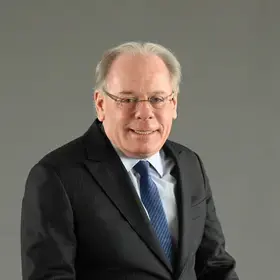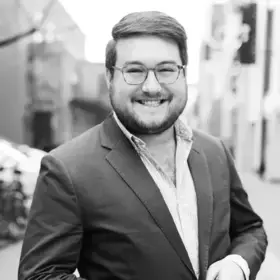On March 26, 2015, the Advanced Consortium on Cooperation, Conflict, and Complexity (AC4) along with the M.S. in Negotiation and Conflict Resolution (NECR) program convened over 200 guests for a daylong series of talks at the Third Annual Sustaining Peace Conference held at Columbia University Teachers College.
AC4 and NECR presented interactive workshops, panel discussions, and keynote speeches by leading scholars and practitioners. These presentations illuminated the latest findings and approaches to sustainable peace not only locally but also globally.
The evening keynote talks featured a variety of experts including psychology professor Peter T. Coleman, executive director of the HSD (Human Systems Dynamics) Institute Glenda Eoyang, political economist Orit Gal, physics professor Larry Liebovitch, and more.
Coleman, in his talk on Complexity, Intractability, and Social Change, explained why it’s not sufficient to simplify a conflict in order to solve it: “We believe that what's most important in working to address these issues...is to make things more complicated, more complex than they appear to be.” This theory applies not only to small-scale conflict such as family skirmishes but also to large-scale political battles (“red voters and blue voters”) as well as intractable global conflicts. “Dynamics,” he said, “start to take on a life of their own.”
To illustrate this theory of conflict, he offered the example of Harlem in the ‘70s and ‘80s. Ravaged by economic blight and the stranglehold of the illegal drug trade, the New York City neighborhood offered few opportunities for children growing up there in that era. One young man, Geoffrey Canada, was born in the South Bronx, managed to stay in school, and went on to Harvard graduate school. He wanted to return to his old neighborhood and help kids like him, children who were born without privilege and who required additional resources in order to succeed. However, his first impulse was to create an initiative that taught children martial arts as well as conflict resolution. He discovered that the program was insufficient in creating impact and lasting change.
The challenges that Harlem faced were complex, and they required a complex solution. The factors that worked against kids growing up in this area, said Coleman, were “macro poverty issues, insufficient access to healthcare and nutrition, lack of sleep, lack of ability to cultivate impulse control.” Coleman said that this snarl of negative forces was a “cloud of factors [that] worked together to create the patterns of violence.”
In the mid-’90s, Canada tried a different approach. He created Harlem Children’s Zone, a method of triage that devotes services to the most at-risk children and their families. “The outcomes have been pretty promising,” Coleman said of the program, which was featured in the 2010 documentary Waiting for Superman. Due to the Harlem Children’s Zone, “One hundred percent of the kids in the preschool are ready for the school once they've entered the school system.”
The example illustrated the importance of looking past Band-Aid solutions and focusing on complex approaches to complex problems. Coleman said, “We need to resist the temptation to go in and do what we've seen work elsewhere...We really need to have a more nuanced understanding of what the problems are, what are existing programs that are there, and, given that more nuanced understanding, maybe we go in – as Geoff did – in a different way.”
“Complexity in and of itself is insufficient, it's overwhelming,” Coleman said. “But the importance of taking the time to understand the context, the nuance before we go in and work is a critical step. It's something that our speakers will come back to more and more.”
Coleman’s talk kicked off the evening’s keynote speeches. His talk was followed by a presentation by Glenda Eoyang on patterns of peace in communities, Larry Liebovitch on the Mathematics of Human Behavior, Orit Gal on social acupuncture, among others. Though the speakers were versed in very different disciplines, their approaches to lasting peace remained strikingly similar in their cultural sensitivity, their emphasis on mapping conflict in order to understand it, and their openness to complexity.


